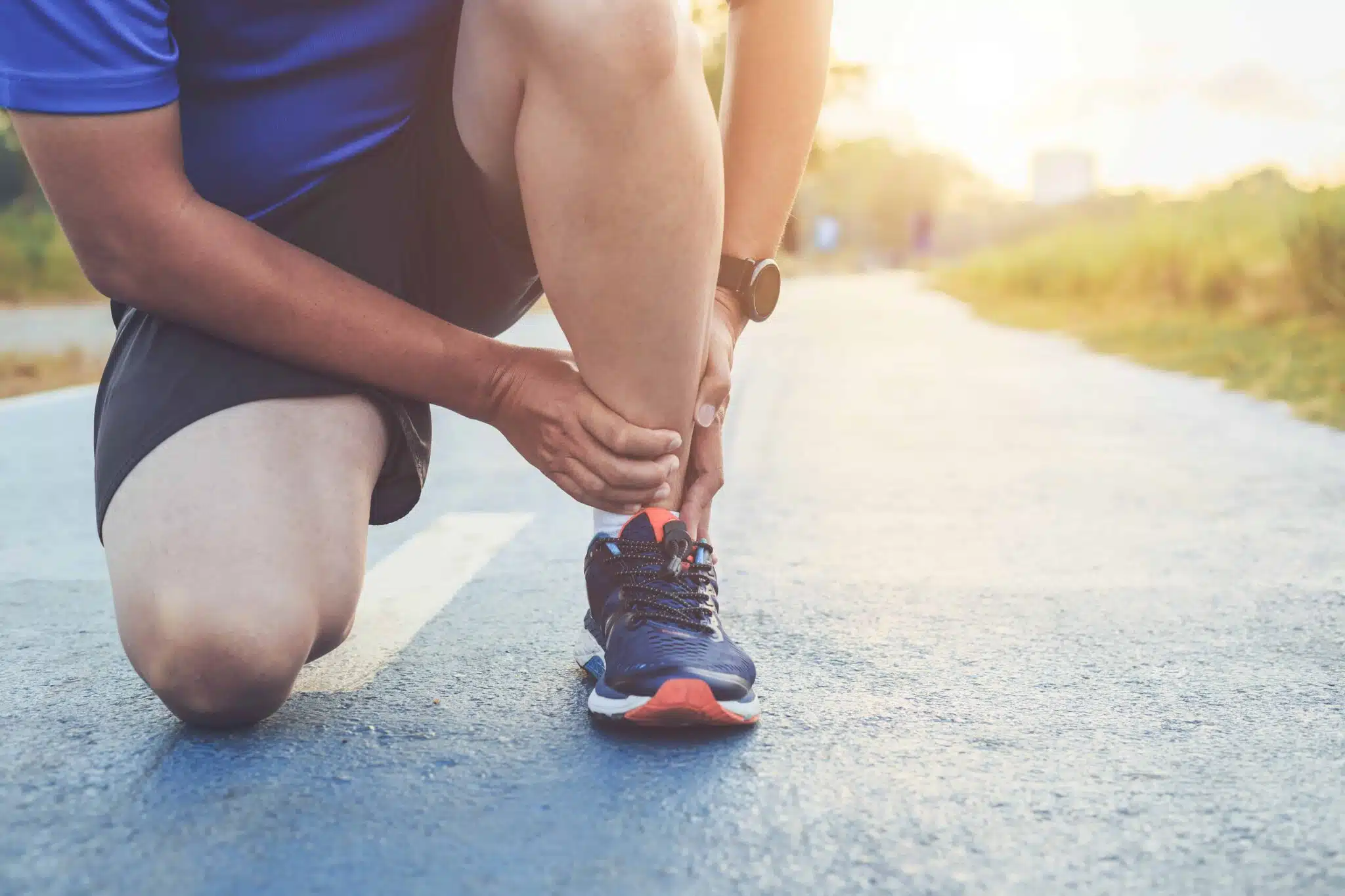When it comes to foot problem prevention, being proactive is key to maintaining healthy feet and avoiding a future of discomfort. Understanding common foot issues and taking steps to prevent them can help reduce the risk of complications down the road.
In this article, we’ll explore five of the most common foot conditions and provide essential foot care tips to help you keep your feet in top shape.
Plantar Fasciitis

One in ten people will experience plantar fasciitis in their lifetime, making it one of the most common foot issues.
Plantar fasciitis at the start, can cause minor discomfort in the arch of the foot or even in the heel. It usually starts when you just get out of bed. It calms down through the day and then the soreness starts at the end of the day.
That discomfort, if not properly treated and investigated, can increase and then start to cause stronger and sharper pain. Sometimes this pain can last through the day to a point where you might find it difficult to walk. The main cause is inflammation- constant pulling and tugging on the thick, inelastic fascia itself (midfoot pain). Or, where it inserts from (the heel pain).
Pressure can be from the arch pressing down on the fascia:

It can also be a tight muscle, like the calf muscle pulling up behind the heel and forcing the fascia to pull away from the heel

It can also be a combination of a tight muscle and pulling of the fascia. In rare occasions plantar fasciitis is caused by a nerve entrapment.
Prevention
Preventing plantar fasciitis is mainly down to figuring out what was the cause in the first place. It might be a biomechanical issue with the feet. It could be due to the shoes that you might be wearing- at home, at work or just around town. In some cases it is due to a muscle imbalance. So figuring out the cause is the first step in treating and then preventing further plantar fascia pain in the future.
One of the cornerstone treatments in preventing plantar fasciitis involves prioritizing arch support! It is a good idea to wear supportive shoes with good arch support and shock absorption, especially if you spend long periods standing or walking. Custom or over-the-counter orthotic inserts can also provide extra arch support and cushioning to distribute pressure more evenly across your feet.
If you have a muscle imbalance then regular, targeted stretching of your calves and feet is also a healthy foot practice that can prevent foot ailments like plantar fasciitis.
Stretching the calves is especially helpful as it reduces strain on the plantar fascia. Check out the best exercises for plantar fasciitis. You can do your exercise routine before bed and when you wake up to prevent this painful condition from affecting your mornings.
Some patients have found rolling a tennis ball/ golf ball under their foot can be helpful to break up the inflammation to the area. Or rolling a wrapped frozen water bottle (no longer than 4 mins, then remove, wait to warm then walk) reduces inflammation build up

Athlete’s Foot

Athlete’s foot can affect up to 15% of the global population!
It’s a fungal infection that usually occurs on the skin between the toes. However it can also start and spread to the arches and then to the boarder of the foot. It can be itchy, red scaly looking and sometimes crack. Inbetween the toes the skin can look more damp than normal.

Prevention
Athletes foot is prevented if you reduce the causes. It enjoys dark, moist environments with an ample food supply. So your feet can be a perfect place for this to thrive. It can be contagious but also you can be more prone to catching it. So,
-if your feet are kept in a constant moist environment.
– you go to public pools and walk around barefooted.
– if you put your socks on right after having a bath or shower…
All these issues increase the risk of catching Athletes foot and allowing it to spread.
Prevention is linked to good foot hygiene. Therefore, make sure you wear slippers or flip-flops in public areas such as locker rooms or pools, and avoid walking barefoot in these places.
You should also make sure your feet stay clean and dry, as fungus thrives in moist environments. Opt for moisture-wicking socks, foot deodorants and breathable shoes. And never put on your shoes while your feet are damp!
If you are daily in the same shoes then try to use 2 pairs of shoes. Use one one day and one pair another day to allow the shoes to dry out. Change the insoles regularly.
Morton’s Neuroma
Some experts believe that one in three people will experience a Morton’s neuroma at some point.

It is characterized by a thickening of the tissue around the nerves inbetween the balls of toes (typically between the 3rd and 4th balls of the toes), and causes pain and discomfort in the ball of your foot.
You can get neuromas in other parts of the foot, but between the 3rd and 4th ball of the toes is called a Mortons neuroma
Prevention
Prevention is the best treatment for a Mortons Neuroma. Preventing the rubbing and thickening of the nerves is a priority. Unfortunately as the nerve thickens there is a chance that it will not go back to normal.
Preventing a neuroma is simply by wearing wider footwear in the toebox.
You can tell if it is your shoes just by removing the shoes and your soreness should subside.
Remember that work shoes, normal outdoor shoes and even slippers can all have an affect on compressing the toes together.
Having a heeled shoe puts more pressure upon the balls of your foot- so reducing arch height is also helpful (and if you must wear high heels, make sure they’re the healthy kind!).
Custom orthotics can provide a way to splay the balls of the foot so even if the neuroma has thickened, it can reduce the pressure the balls of the foot are placing upon the nerves.
Ingrown Toenails

Our toenails can be a bit troublesome sometimes —they crack, curl, get too thick, and sometimes even surprise us with strange colours! But one of the most common toenail conditions is ingrown toenails. Two out of every ten people visiting a healthcare provider for a foot issue end up complaining about this painful nuisance.
Ingrown toenails can occur when a spike of nail is pressing into the skin. It can also happen if you have pincer like nails (involuted) and those nails press into the skin.

If you have wider nails, the skin on the side of your toe can be more prone to go into the nail. If the toes are kept in a damp environment then the skin and nails will be soft and more easily press into one another

Prevention
Prevention comes with finding the cause and preferable no home treatment (in many cases it can make it worse). Apart from scratching your socks, placing a “V” into the nail doesn’t do anything.
Poor nail care is usually the main culprit especially cutting down the sides of the nail. It is better to allow the nail to grow past the skin line and then cut to the contour of the nail. Cutting straight across can leave angles and cutting down the sides can leave spikes of nail.
If your nails are curled around or thickened then professional footcare can help thin down the nail and offer treatments for the curved nail. Reducing dampness can reduce ingrown toenails. Wider footwear (and non tight socks) can reduce the risk of compressing the skin into the nail.
In some cases it can be hard to cut your nails effectively, if this is the case then having a medical pedicure from a professional is usually a good preventative option.
Calluses

Almost everyone will get at least a small foot callus in their lifetime and is a common foot issue.
They are thickened areas of skin that develop due to repeated friction or pressure. Initially they can be pain free but as time continues then the callus can build up and adds pressure that that area. This adds more callus and now a cycle starts.
Eventually too much pressure and the skin starts to break down and dry blood can appear within the skin.

Prevention
Callus is best treated by prevention- finding out why the hard skin is there in the first place.
So a footcare professional will look at your feet and assess where the hard skin is and then find the cause– where is that pressure coming from. They will then reduce down the hard skin, to break that pressure cycle, then offer advice on how to prevent the hard skin coming back- or reducing its build up.
In many cases this is due to poor fitting footwear or a mechanical issue with the foot.
Preventing callus build up can be done once a week with a plastic footfile when the foot is dry. Pumice stones are used when the foot is wet.
But it is usually a good idea to check the cause by a footcare professional as sometimes too much file or pumice use can make the area sore, affect the good skin surrounding the callus or even make the area worse as you might go too deep.
Dry skin is prevented where you moisturize your feet regularly (but not inbetween your toes).

It will also help the callus not crack but it won’t prevent the callus build up- as that is caused through pressure.












